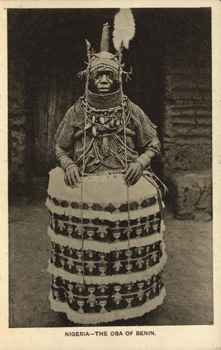Product Description
Benin King Oba bronze standing figure, Nigeria, 20th Century


Benin King Oba bronze standing figure, Nigeria, 20th Century
Lost wax cast bronze with a rich brown and black patina with light desert sand patina in some of the recessed areas.
The art of Benin is the product of an urban royal court, and is meant to symbolize and to extol the power, mystique, grandeur, continuity, and endurance of the ruling dynasty and its governing institutions. From the 14th century until its fall in 1897, Benin was ruled by the Oba, a divine ruler at the head of the political system of titled chiefs. Under royal support, a number of craftsman's guilds produced bronze, brass, and wood sculptures and embroidered cloth, all of which have become prized by museums and collectors.
H: 20″ x W: 7 1/2″ x D: 7 1/2″
Benin King Oba bronze standing figure, Nigeria, 20th Century
Ifugao Tribe Northern Luzon, Philippines
Side table/cabinet circa 1940.
Solid hardwood or ebony with an adzed surface, interior shelf.
H: 19” x W: 15” x D: 12”
SOLD
AFRICAN / TRIBAL
CAMEROON GRASSLANDS
Stool 20th Century
Hand carved wood with a rich, well worn and developed brown patina, minimalist decoration with fine line incising. Very comfortable chair.
H: 12″ x W: 16″ x D: 10 1/2″
